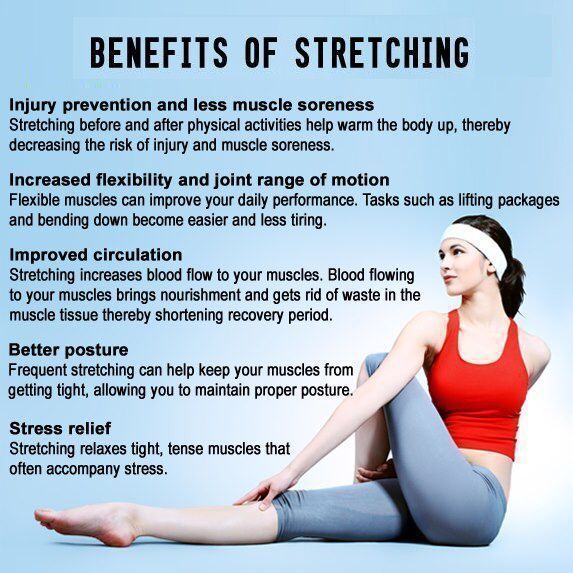
The Key Benefits of Incorporating Recovery and Mobility Exercises into a Fitness Routine
In the world of fitness, the focus is often on intense workouts, lifting heavy weights, and pushing your body to its limits. While these aspects are crucial for building strength and endurance, they are only part of the equation. To maintain a balanced and sustainable fitness regimen, it’s equally important to incorporate recovery and mobility exercises. These exercises not only enhance your overall fitness but also promote injury prevention and long-term well-being. In this article, we’ll explore the key benefits of incorporating recovery and mobility exercises into your fitness routine.
1. Injury Prevention
One of the most significant advantages of integrating recovery and mobility exercises is the prevention of injuries. Repetitive strain and overuse injuries are common in sports and fitness activities. Incorporating exercises that focus on joint mobility, flexibility, and muscle recovery can help reduce the risk of these injuries. Stretching, foam rolling, and yoga, for instance, can improve the range of motion in your joints and reduce muscle tightness, decreasing the likelihood of muscle strains or joint injuries.
2. Improved Flexibility
Flexibility is a critical component of fitness that is often overlooked. It refers to the range of motion in your joints and muscles. Incorporating mobility exercises like dynamic stretching and yoga can significantly improve your flexibility. Increased flexibility not only allows you to perform exercises with better form but also reduces the risk of muscle imbalances and chronic pain. Moreover, improved flexibility can enhance your daily activities and overall quality of life.
3. Enhanced Muscle Recovery
Recovery is an essential aspect of any fitness routine. After intense workouts, your muscles need time to repair and grow stronger. Recovery exercises, such as static stretching and self-myofascial release using foam rollers, can help speed up this process. By releasing tension in muscles and fascia, these exercises promote blood flow to the muscle tissues, which aids in the removal of waste products and the delivery of nutrients necessary for repair and growth.
4. Reduction in Muscle Soreness
Delayed onset muscle soreness (DOMS) is a common side effect of intense workouts. While it’s a natural part of the muscle-building process, excessive soreness can be uncomfortable and hinder your ability to stick to your fitness routine. Incorporating recovery exercises can help alleviate muscle soreness by promoting better circulation and reducing muscle tension. This means you can get back to your workouts more quickly and with less discomfort.
5. Stress Reduction
Fitness isn’t just about physical well-being; it also plays a significant role in mental health. Incorporating recovery and mobility exercises, particularly those that involve mindfulness, like yoga and deep breathing, can help reduce stress and improve mental clarity. These exercises promote relaxation, which can be especially beneficial in today’s fast-paced and stressful world.
6. Improved Posture
Many people spend hours each day sitting at a desk or in front of a computer, leading to poor posture and chronic back, neck, and shoulder pain. Mobility exercises that target these problem areas can help improve posture by releasing tension in tight muscles and promoting proper alignment. As your posture improves, you’ll not only feel better but also reduce the risk of future musculoskeletal problems.
7. Better Athletic Performance
Whether you’re an elite athlete or a weekend warrior, incorporating recovery and mobility exercises can enhance your athletic performance. By increasing flexibility and range of motion, these exercises allow you to move more efficiently and with greater precision. Improved recovery also means you can train harder and more frequently, ultimately leading to better results in your chosen sport or activity.
8. Longevity in Fitness
Consistency is key to long-term fitness success. Incorporating recovery and mobility exercises into your routine can help you stay active and injury-free for years to come. As you age, your body naturally loses some of its flexibility and mobility, making these exercises even more critical for maintaining overall health and functionality.
9. Customizable to Your Needs
Recovery and mobility exercises are incredibly versatile and can be customized to meet your specific needs and fitness goals. Whether you’re recovering from an injury, looking to improve your flexibility, or simply trying to reduce muscle soreness, there are exercises and routines that can be tailored to your unique requirements.
10. A Balanced Fitness Lifestyle
Incorporating recovery and mobility exercises fosters a more balanced fitness lifestyle. It reminds us that fitness isn’t just about pushing our bodies to the limit but also about taking care of them. This balance not only helps us avoid burnout and injury but also ensures that our fitness journey remains enjoyable and sustainable in the long run.
In conclusion, recovery and mobility exercises should be seen as integral components of any fitness routine. They offer a multitude of benefits, from injury prevention and improved flexibility to better overall well-being. By incorporating these exercises into your fitness regimen, you can enhance your performance, reduce the risk of injuries, and ensure that your fitness journey is not only productive but also enjoyable and sustainable. So, don’t forget to stretch, roll, and breathe your way to a healthier and fitter you!



